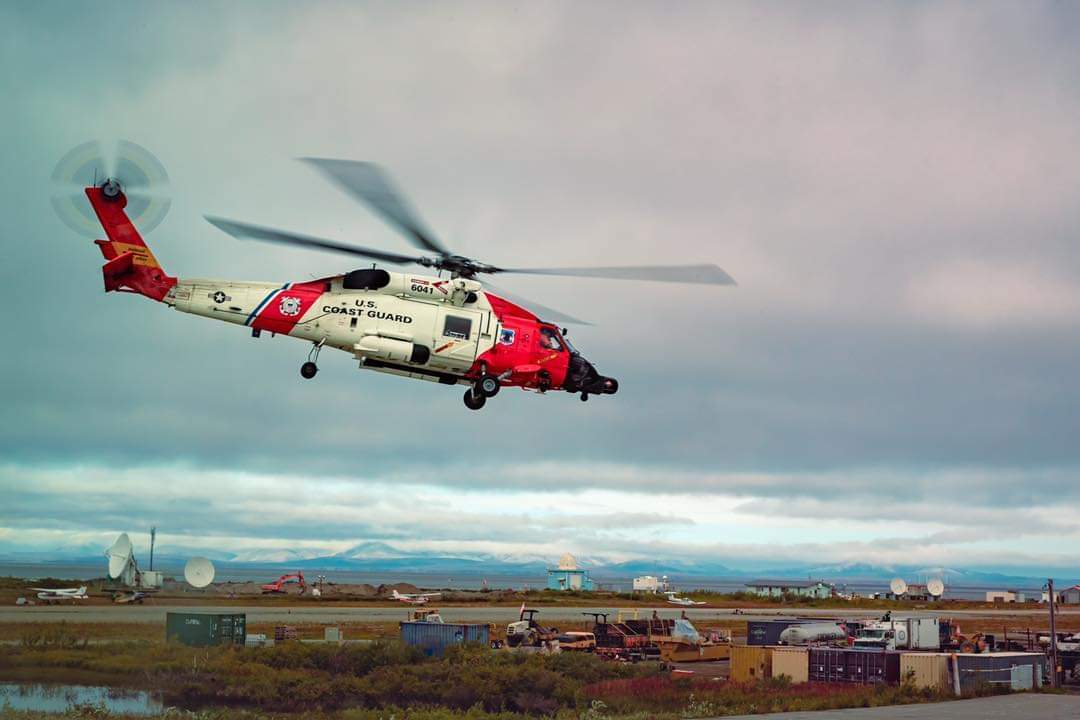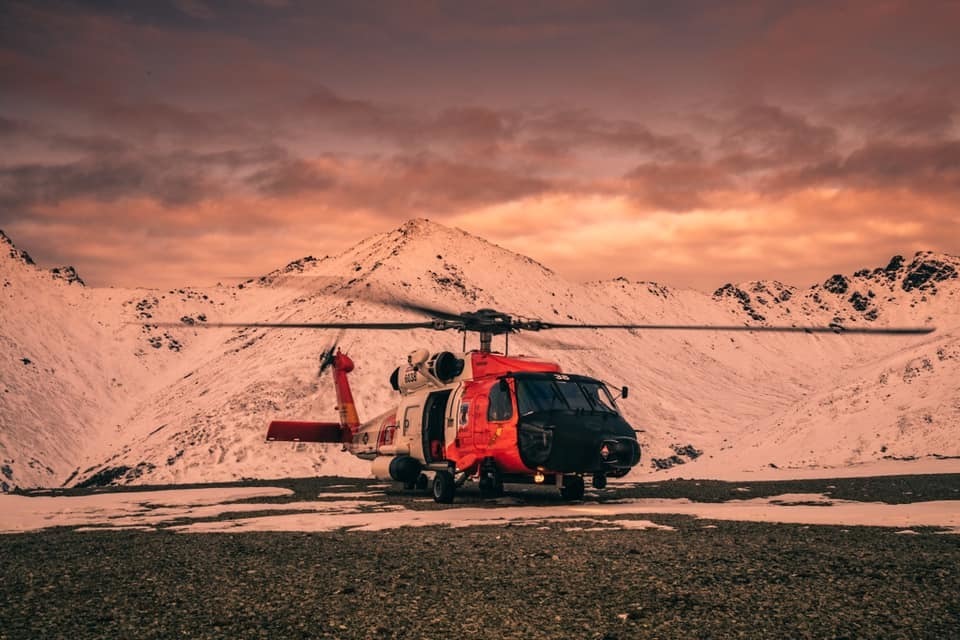U.S. Coast Guard wraps up its annual Arctic Alaska operation
The Coast Guard closed its seasonal base on Kotzebue on Sunday.

The U.S. Coast Guard over the weekend wrapped up an Arctic operational season that supported scientific research, environmental and public safety and international cooperation.
Operation Arctic Shield, the annual program that stations personnel, aircraft and ships in and around the Arctic waters off Alaska, officially ended when the Coast Guard on Sunday closed its seasonal station at Kotzebue.
“This season, Coast Guard Forward Operating Location Kotzebue was as busy as ever serving remote Alaskan communities, hunters and mariners throughout the Arctic,” Coast Guard Captain Nathan Coulter, commanding officer of Air Station Kodiak, said in a statement. Aviators and aircraft stationed seasonally in the Arctic generally come north from Air Station Kodiak.
This year’s program was notable for some long-distance voyages that connected the Arctic to lower latitudes.
The icebreaker Healy, which annually carries scientists far into Arctic waters, took a rare trip from Alaska into the once-impenetrable Northwest Passage, traveling through the Canadian Arctic and south from there to the U.S. East Coast. The Healy stopped in Baltimore in late October and was visited by several dignitaries, including Alaska Senator Lisa Murkowski, before continuing on its planned circumnavigation of North America back to the ship’s homeport of Seattle.
Two Hawaii-based cutters, the Kimball and the Midgett, participated in Arctic Shield operations by helping patrol the Bering Sea. The Hawaii-based cutters, along with the California-based cutter Bertholf, also took part in exercises with the Japanese Navy, the Royal Canadian Navy and the Russian Border Guard.

In all, there were at least 15 search-and-rescue missions conducted in locations ranging from Nightmute, a coastal village in western Alaska’s Yukon-Kuskokwim Delta, to Little Diomede, the tiny Alaska island in the middle of the Bering Strait, to Utqiagvik, the nation’s northernmost town. The final Arctic Shield search and rescue mission of the season was conducted last week near Nome, when some boaters were rescued from the Sinuk River.
“I am proud of the current success of this operation and the Coast Guard’s continued ability to provide critical services to Arctic communities,” Rear Admiral Nathan Moore, commander of the Coast Guard’s Alaska-based 17th district, said in the statement. “The successful rescues conducted are due almost entirely to the strength of our partnership with local community responders, the people who know the region and their communities best.”
An important component of the annual Arctic Shield program is work by the Coast Guard’s Marine Safety Task Force, which inspects both fishing vessels and onshore fuel-storage facilities. The task force inspected 128 facilities and 47 commercial fishing vessels, the Coast Guard said.
The Marine Safety Task Force this year resumed its inspections of gold-dredging vessels working offshore in and around Nome. Those are voluntary inspections aimed at giving safety advice; inspections are mandatory for only the largest dredge vessels, those over 300 metric tons. In 2020, the task force had been unable to perform those voluntary inspections because of the COVID-19 pandemic. This year, the task force inspected five dredge vessels, said Coast Guard spokesman Nate Littlejohn.
The annual Arctic Shield program started in 2009 at a time when an aggressive program of Arctic oil exploration was poised to start in the Chukchi and Beaufort seas. That oil exploration, conducted by Shell, was ultimately abandoned, but the marine operations in Arctic waters continue, as does the Coast Guard’s interest in maintaining a high-north presence.
Elsewhere in the Arctic but outside of the 2021 Arctic Shield program, Alaska Coast Guard personnel took part in an international search and rescue exercise conducted in September at the North Pole. Two Coast Guard members stationed in Juneau were aboard a French vessel to participate in the event, which simulated a shipboard fire.